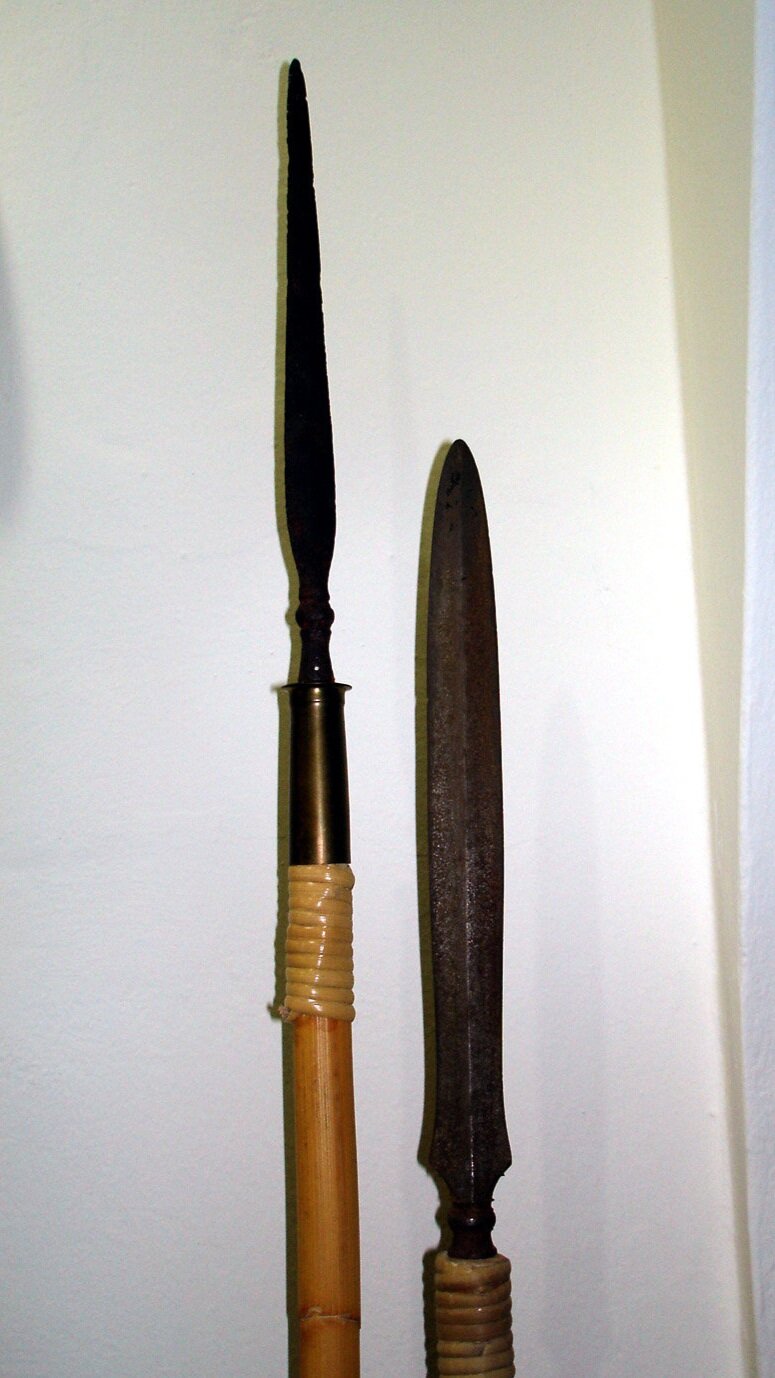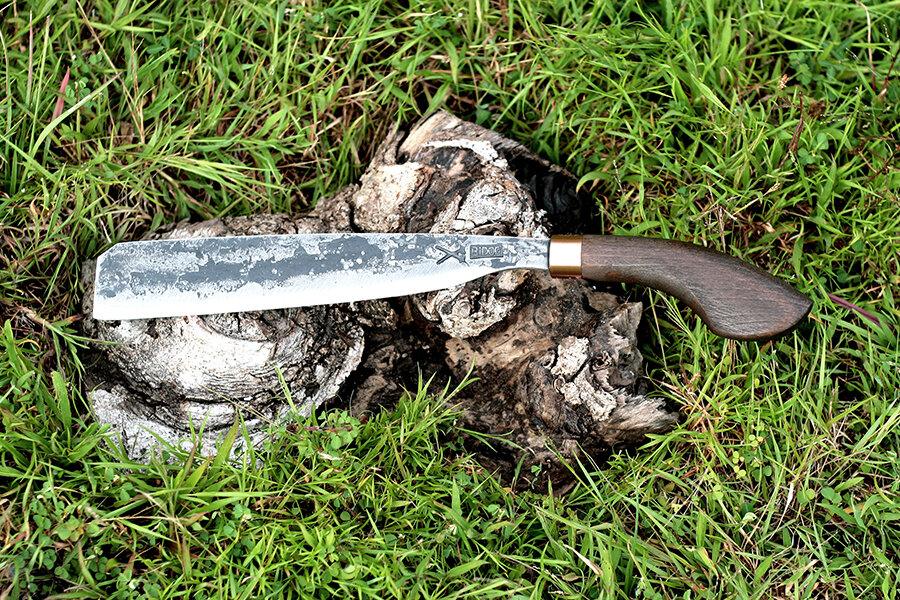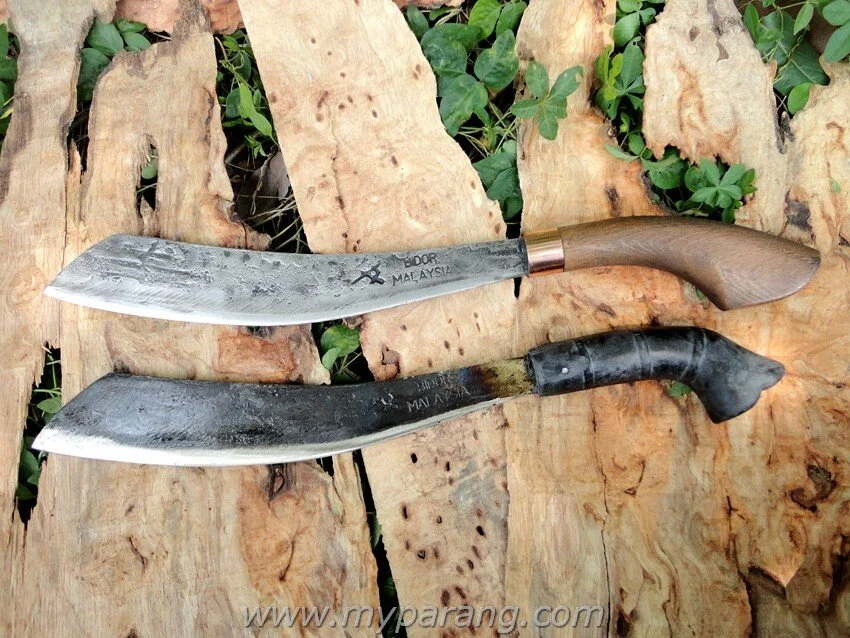Weapons of Silat
In times of peace, they are considered no more than daily tools, but when it is deemed necessary, they become deadly weapons.
Author : Steve Hanafi (Silat Sharaf Practitioner, Malaysia)
The people of the Malay and Indonesian Archipelago have been forging and using the machete and other weapons for over more than five hundred years ago. Other weapons include knives, sickle, spears and so on. Until the early twentieth century, the people of the archipelago have forged weapons primarily for their daily use and self-defense rather than using it for offensive purposes. People mainly use these weapons as a tool for their daily chores and activities such as hunting, gathering firewood, care for their crops and building their shelter. As the cultural and social systems developed, the functions of the weapons have also evolved and changed. However, because the archipelagos are separated from each other, traditional weapons have also developed in different ways according to the culture of the people. They have gone through a long period of development before they look like they are today.
Although going through many changes, these weapons still retain their original characteristics such as the shape, the size, main materials used and the process of making it. But now, its function has turned into sacred objects of honor, adoration, symbols of family ties, service marks, titles and powers, luxury goods and finally considered artworks. These weapons become more sacred and precious to the owner when they are: made specifically for them, is given as a gift, passed down from the previous generation or as a symbol of respect from another person.
The weapons
Image courtesy of PusakaKu
Tombak / Lembing
The Tombak (spear) and the Lembing (Javelin) have common looks, yet they are distinguished by their size, weight, and the tip. The spear is more commonly seen used by the guards at the palace and the Sultan’s bodyguard while the javelin is more commonly used for hunting. The javelin is usually shorter and lighter. It has a thinner tip with a fine and straight edge. The spear has a wider tip and is longer. The javelin is one of the most favored weapons for those going to war mainly because they can use it for both long-distance and close quarters. Extremely effective for long-range attacks and can be thrown (manuscripts recorded) up to 50 feet. Also, for the fact that it is light and usually warriors carry 3 – 4 of them at one time.
A vicious feared by many
2. Keris
One of the (if not) most famous weapon of Silat fighters, the Keris. There are the Keris Pendek (Short Kris) and the Keris Panjang (Long Kris). The Keris Pendek can be as short as 7 inches and the length of a Keris Panjang can reach up to 40 inches. Unlike other knives or dagger, a Keris has curves that are called “Lok”. The Lok is designed so that each stab creates a bigger exit wound that the entry wound, it is also used to break bones during exit by twisting the keris sideways while pulling it out. Keris is often related to spiritual and mystical aspects. The Keris’s main function is to stab, it is not used to slice or make slashing motions, just stabbing. To top it off, the owner will put poison into the steel of the Keris to make it more lethal. If the opponent gets stabbed even at non-lethal areas such as the palm, they will still die in a matter of days because of the poison. The poisons are usually from arsenic, poison frog or poisonous tree bark like the ones from Pokok Ipoh.
Effective for quick stabbing
3. Badik / Tumbuk Lada
A type of dagger, measuring from 7 to 12 inches from the handle to the tip of the blade. The Badik and Tumbuk Lada are of the same family, the dagger. Badik is commonly larger and has less carving than his smaller brother, Tumbuk Lada. The Badik is mostly known where it is used in the sigajang laleng lipa, a traditional form of dueling, where two men get into a sarong and fight till one of them dies. It is a traditional dueling method to settle feuds and arguments. It is considered as extremely courageous for one to even step into this duel as an injury is inevitable at such a close range. The Badik is also a symbol of cultural identity in Sulawesi. Bugis and Makassar people still wear it to ceremonial occasions, and they are usually worn at the right side of the hip.
4. Parang
(Golok, Duku)
A parang (machete) is by definition “a large knife”. It is used for cutting harder wood, with harder edges and a center of blows far ahead of the stalk. The edges are also slightly oblique so they don't get stuck while chopping. Machetes are usually 30 centimeters (12 in) long. Its large belly allows for maximum power when cutting logs. Different region has different Parang designs and sometimes the cultural aspect also influences its design. The Parang is also considered by many as one of the best survival tools.
Image courtesy of MyParang
4.1 Parang Lading
One of the more popular traditionally designed parang is Parang Lading. It is believed that this parang originated from Kedah, a state located in North Malaysia. This parang has been acknowledged as the official weapon in Silat Cekak. In Silat Cekak, the length of the Parang has to match the length of the owner’s arm, this is made so that the weapon does not “bite” its owner. The Parang lading used in Silat Cekak is usually only sharp about 1-2 inches from the tip. This is done so the blunt part of the blade can be used to deflect and stop incoming attacks. The agricultural version has 10 inches of sharpened edge (on a 12-inch blade).
Image courtesy of MyParang
4.2 Golok Perak
Originated from Perak, another state located in North Malaysia. You can find this Golok in different sizes and lengths. The smaller ones are for kitchen use, and the bigger ones are used for cleaning game. It was a common sight to see a Golok Perak in the kitchen before the introduction of stainless steel knives. Used in extreme close-quarters combat and is very efficient at stabbing into vital areas of the body.
Image courtesy of MyParang
4.3 Parang Bentong
The most commonly used parang among Malaysia’s Orang Asli (Indigenous People). One of the many reasons they love this parang so much is because the square tip makes this parang such a robust tool that is perfect for their daily use. The Orang Asli uses a lot of bamboo in their daily life, and this design does the job so damn well. It is such a great chopper, it chops bamboo as if they are mere chopsticks.
Image courtesy of MyParang
4.4 Duku Chandong
Parang is called Duku in East Malaysia (Sabah & Sarawak), it means the same thing. This parang excels at cutting and chopping (and yes, chop your heads off too). Iban warriors who were also known as the Head-hunters favors the use of this parang because of its chopping capability. The curve and the design help to shift the weight to the front of the knife so that when you use it to chop, the weight itself will do the work for you, saving a lot of energy.
Newer parang designs use plastic as their handle, mostly to save on the production cost. However, the wooden handle excels at helping your hand to be blister-free and it helps you grip very well as wooden handles are more naturally contoured to the human hand
5. Karambit
(Kerambit, Kurambik, Karambol, Karambiak)
The Karambit is a vicious weapon used in extreme close-quarters combat. It is a curved knife that resembles a tiger's claw. The blade is usually 6 – 8 centimeters. The handle is made using wood or buffalo tusk. It's easy to hide in sarong, pockets, purses, and belts. It is small, fast and the techniques using the Karambit targets the deadly points such as the blood vessels and joints such as the neck, armpit, stomach, elbow, and knee. It is usually used as a last resort when there are no other options. However, when the Karambit comes out, it spells death for those who force it to do so. Its lethality comes from the weapon’s ability to rip flesh out and to create deep wounds with just a single slash, making the enemy unable to move their limbs, or terrifying them to their guts that they are unwilling to continue fighting.
6. Sabit
The sickle can be used as a single weapon (single blade) or as a pair (2 blades). It has a curved edge like a crescent moon and is used to strike soft areas. The main targets are the neck, back of the neck, the torso and the main ligaments/tendons. The sickle has a longer reach than the Karambit making it a perfect weapon for close to medium-range combat. It is widely used as an agricultural tool to cut off grass and to harvest paddy. However, it is no longer used as frequently as it was due to the use of machinery and tractors.
As time move so does the culture and the use of these weapons. Nowadays it is very rare to see anyone carrying any of these weapons for self-defense purposes. One of the main factors is because of the law forbidding one from doing so, and another driving factor is because of the shift in culture and mentality. It is much more effective and concealable to carry knives that use Kydex sheath, or thermoplastic sheath and also using handle scales of materials such as rubber, G10 or fiberglass nylon. These are just innovations that help make our lives easier.
There are still martial art schools and teachers that teach the use of these weapons as they are still lethal and the techniques are just as effective. As much as we love and value these traditional weapons, we also value our lives and our loved ones more. We believe that “The best weapon is the one that you have with you”. As the modern-day knife is easier to carry and more concealable.










